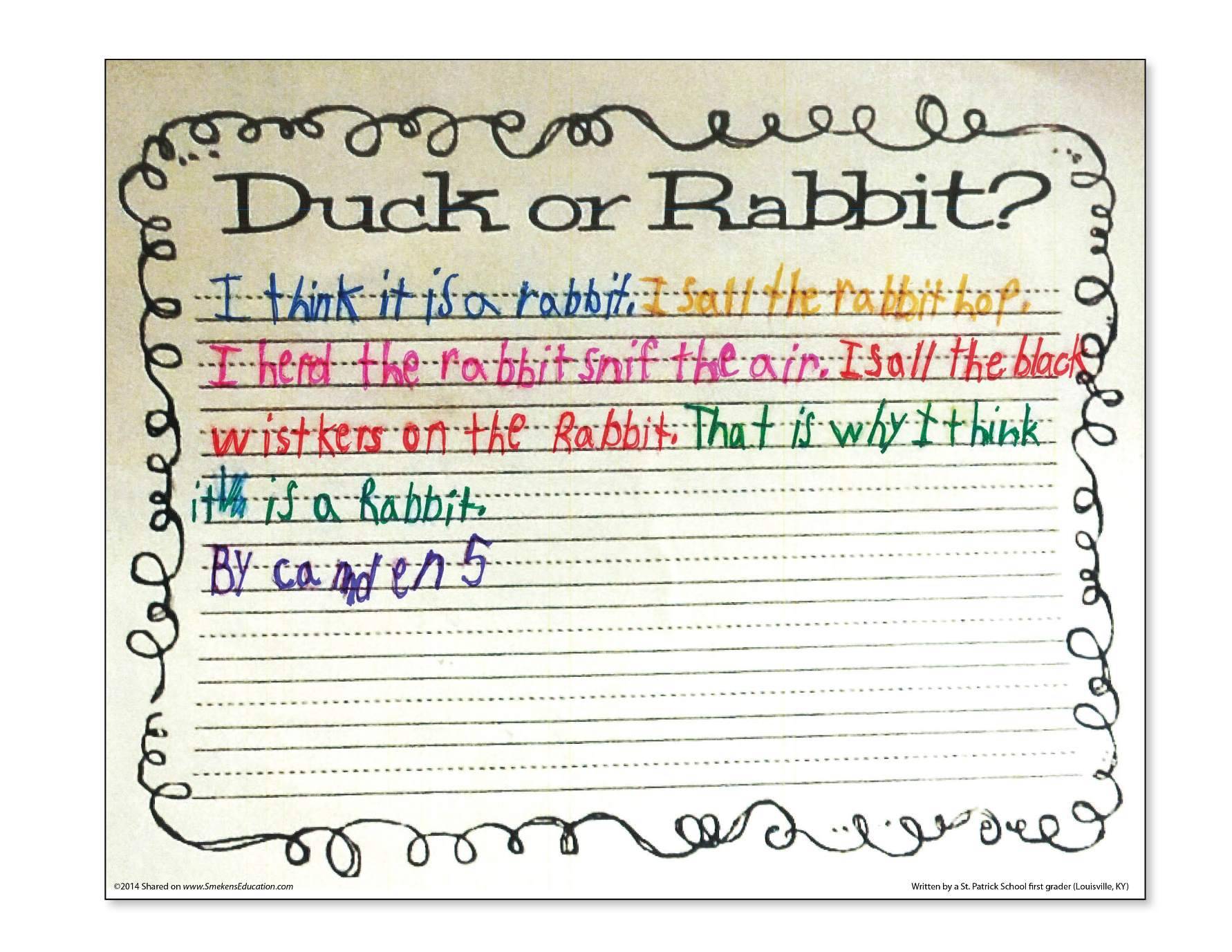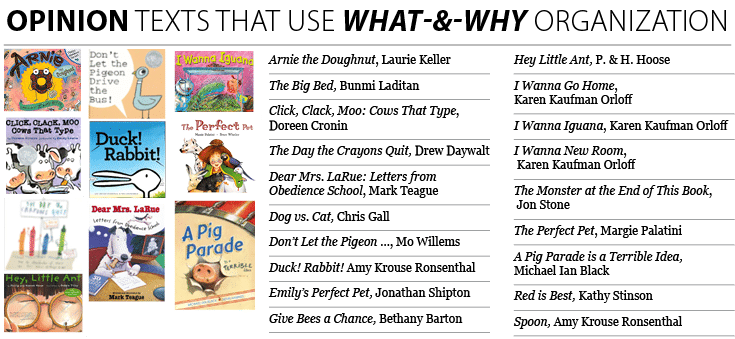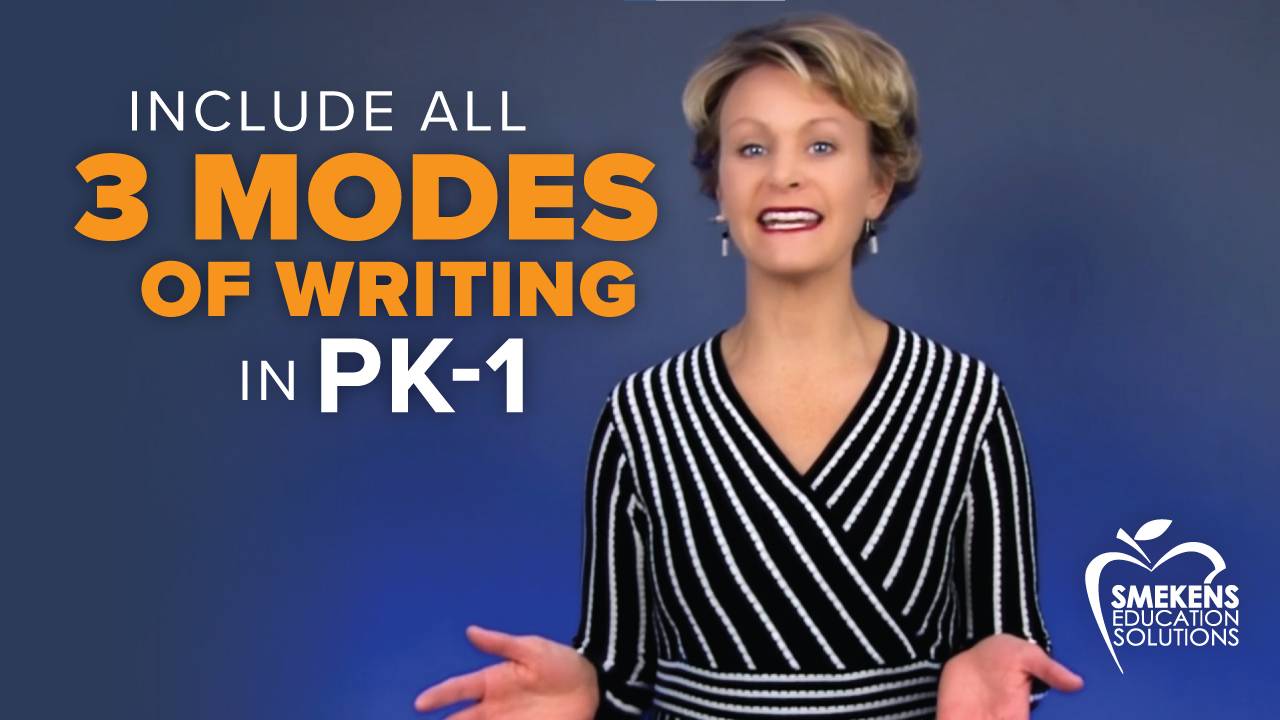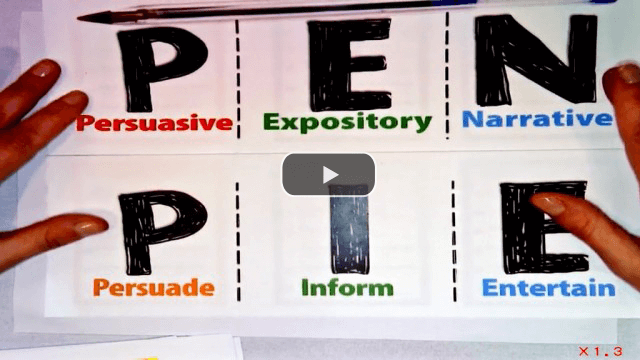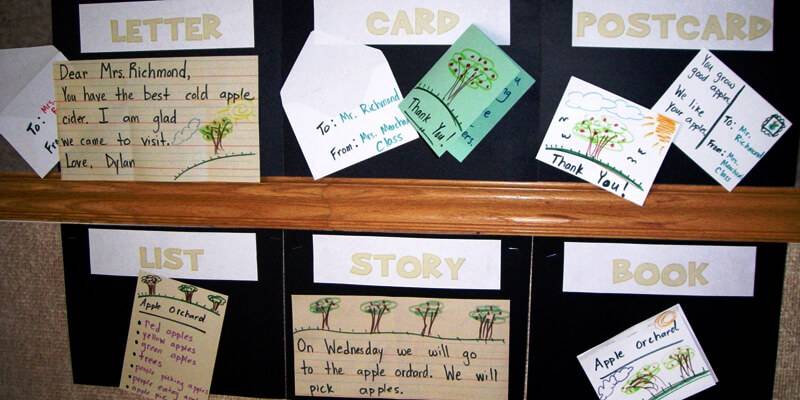Learning Center
writing
Require WHAT & WHY in primary opinion writing
october 13, 2023
K-2 teachers often wonder how to address the argumentative writing standard. With our youngest writers, we work on the simplest form of argument—opinion writing. And this is right up their alley! We know that five, six, and seven-year-olds have favorites and things they strongly dislike. We know (from their constant tattling) that they have a definitive sense of right and wrong, fair and unfair.
So bringing opinion writing into the primary classroom seems very appropriate. However, like any other writing expectation, plan to scaffold instruction to help them achieve that goal. Specifically, teach them how to write in the what-and-why structure.
- The beginning always includes WHAT the writer thinks or believes about a topic. This is his opinion.
- The middle describes WHY the writer thinks or feels what he does. These are his reasons.

Opinion-Writing Templates | Pictures, Labels, & Words | Sentences
You may want to reveal persuasive statements students have said recently (e.g., Can we have an extra recess since we all did well on the test? Can I go first since it’s my birthday?). Point out that each of these statements follow the what & why structure. WHAT they want is followed by WHY they think they deserve it. This same organization is used in all genres of opinion, persuasive, and argumentative writing.
WHAT do you think?
The beginning of opinion writing, or the introduction, is like the train engine. In this first sentence, students express what they think or how they feel about a topic (e.g., favorite food, best pet, etc.) or a text (e.g., favorite character, etc.).
Provide sentence starters to guide students in sharing their opinions in the beginning. This may include I think. . . I feel. . . I want… I wish….
While explaining what to include within the first sentence of an introduction, you also need to explain what not to include. When students share their opinions, they often follow through with an explanation. However, we don’t want the “because” statement as part of the first sentence. We want them to save their “because” reasons for the middle.
WHY do you think it?
If the beginning reveals what the writer thinks or feels, then the middle explains why he thinks or feels that way. The middle provides the reasons. This may include reasons drawn, labeled, or written in words or sentences.
Opinions can’t stand alone. Writers support them with multiple reasons why. They tell the reader why they think they are right. Provide additional sentence starters like:
- I think this because….
- One reason is….
- Another reason I think this is….
Initially, expect a single reason—a single train car. Then push for two and ultimately three reasons—comparing it to a train getting longer and longer. For each additional reason students write, tape on another piece of paper: What-Why-Why-Why. (Each picture or simple sentence is representative of an entire paragraph that students will ultimately produce when they’re writing persuasives in upper grades.)
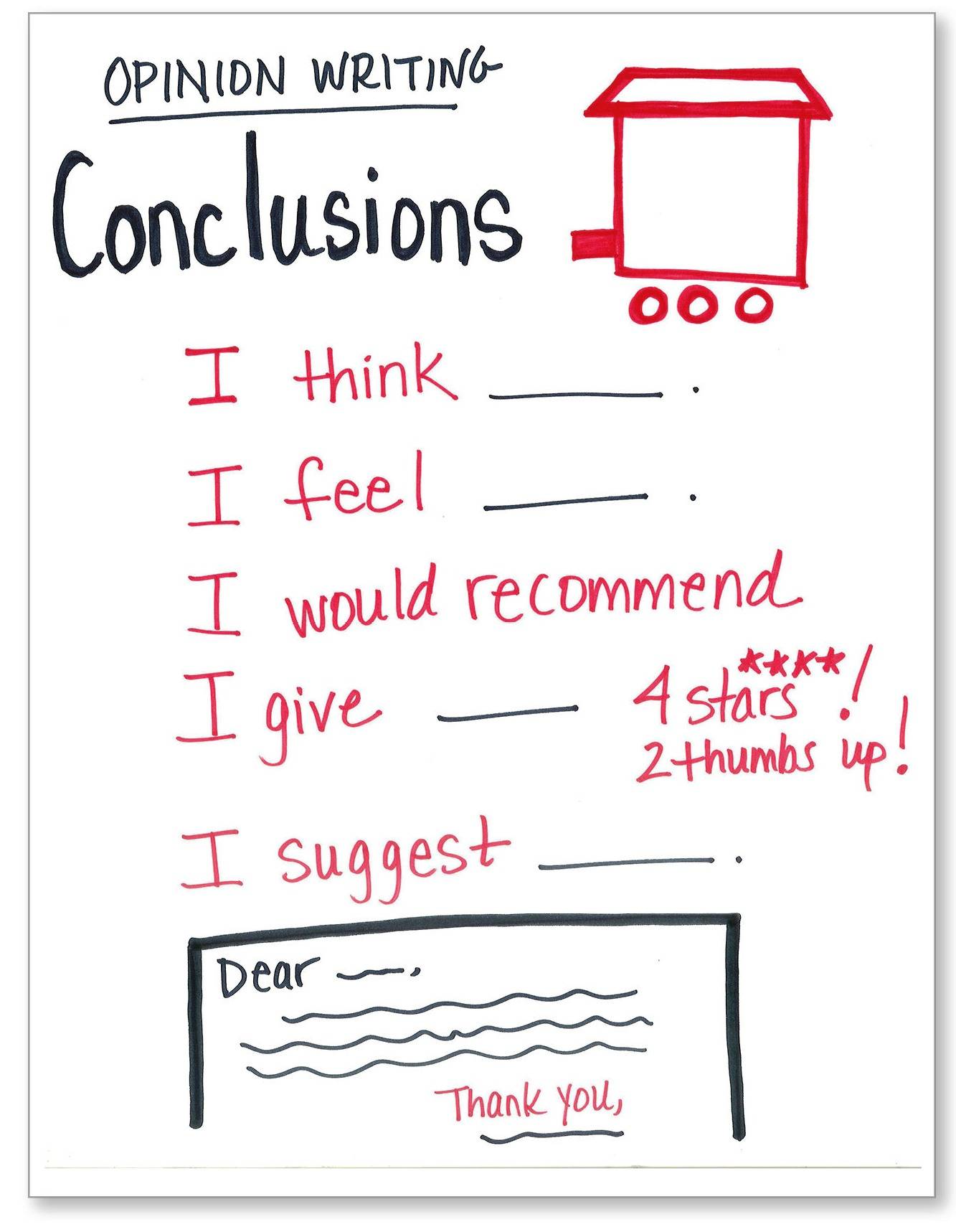
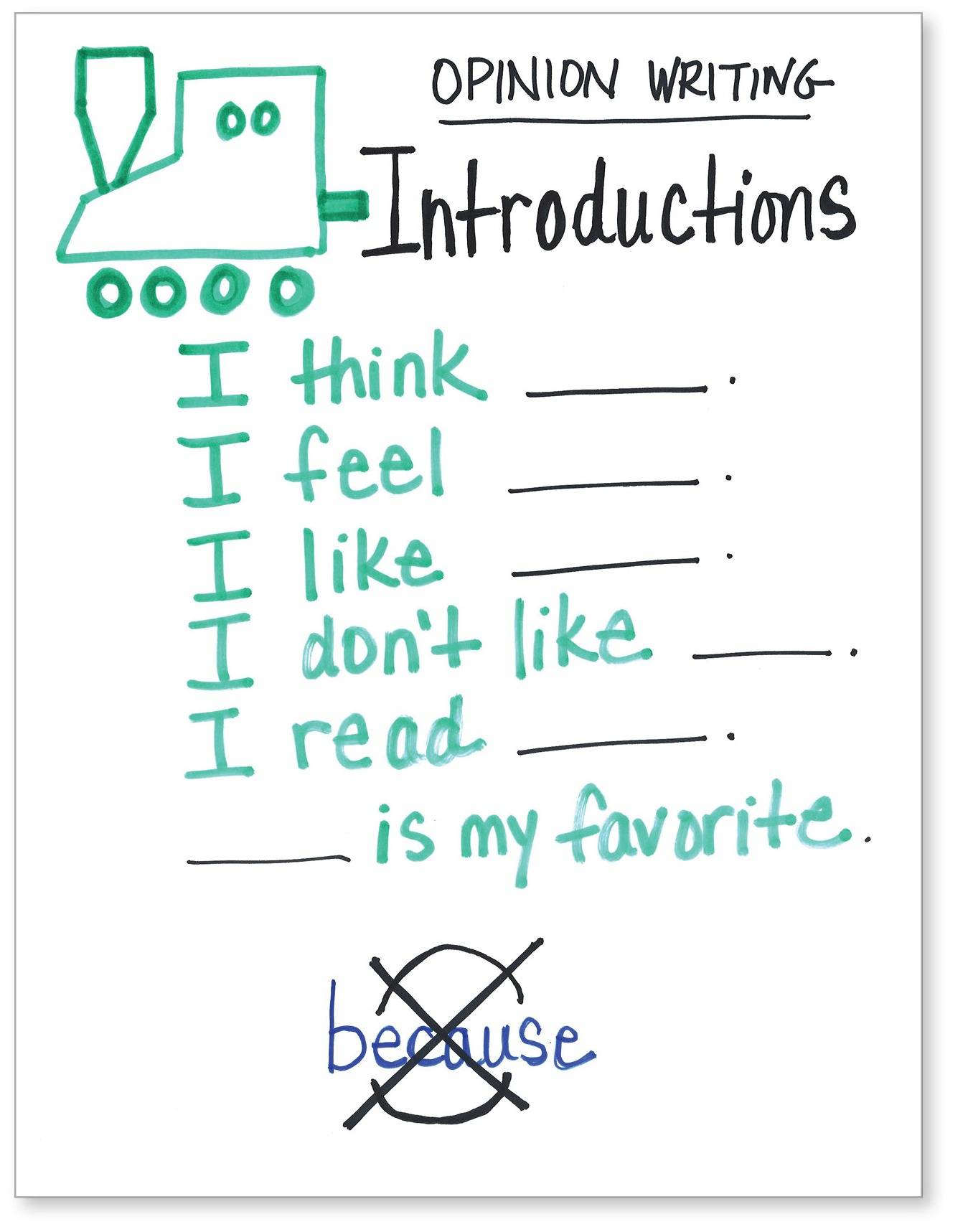 End with a sense of closure
End with a sense of closure
Continuing the train analogy, the opinion (i.e., what) is the train engine. The reasons (i.e., why) are the middle train cars. And eventually, you need to introduce them to the caboose, the conclusion to the train and their opinion writing.
The writing standards simply state that primary students need to “end with a sense of closure.” A typical strategy to achieve this is to restate the opinion. (NOTE: If students are writing a review or recommendation, this is also where they might include their thumbs-up/thumbs-down rating.)
Respond to text
Apply opinion/persuasive writing to reading responses. Generate opinion statements that require text-based reasoning as the support.
- After reading Hey, Little Ant by Phillip and Hannah Hoose, make a list of reasons why the boy should or should not step on ants.
- After reading Spoon by Amy Krouse Rosenthal, make a list of reasons explaining why Spoon’s life is or is not boring.
- After reading Duck! Rabbit! by Amy Krouse Rosenthal, provide reasons why the character is a duck or a rabbit. (Example by St. Patrick’s School first grader in Louisville, KY)
Utilize other read-aloud texts to further instruction on the what-and-why organization of opinion writing.


